Read this in [est_time]
The old markets of Porto
Introduction
Apart from the jewel of the crown or Porto’s markets, Mercado do Bolhão, many other Portuense markets fell by the wayside, and can now only be visited if we wade into the past.
The passing of time led to the disappearance of the buildings, but also of many traditions and professions. The memory lies alone in the minds of those who experienced the rich environment of those lively markets. To the present day, only a few living elements of these places have survived, such as fountains and spouts. Now, only our imagination and a few records can portray the population that walked those busy streets, choosing and selling the produce of that time. Like the dedicated bakers of Avintes, that sailed the Douro river in small boats to come and sell their bread and broas in the city. Alas, all the elements that were part of the dynamic of feeding the city.
These markets helped shape a city as gastronomically rich and diverse as Porto.
Mercado do Peixe
1834-1949
Campo dos Mártires da Pátria
The origins of the long-gone Mercado do Peixe (Fish Market) date back to the end of the 18th century when the sale of fish was settled in the Alameda da Cordoaria. The fishmongers were moved to other parts of the city for a while, having come back to Cordoaria in 1834, to a market settled inside a large shed. This building was near to the city’s public granary, where cereal was stocked for the production of bread.
As the worries with public health increased, in 1868 the City Hall ordered the projection of a specialized building for the Mercado do Peixe. The design was penned by the engineer Gustavo Adolfo Gonçalves de Sousa. The building’s inauguration was made in May of 1874, and the sumptuous neoclassical structure was filled with all the modern amenities to guarantee the best sanitary conditions for a business that generates many foul smells and bothersome wastes.
The market was provided with fish from Matosinhos, Foz do Douro, Póvoa de Varzim, Espinho, Viana do Castelo, and Vigo, as well as other local fisheries, which arrived in the city by train. This building hosted and centralized the sale of fish in the city of Porto for almost eight decades, having known its end in the mid-20th century.
In 1949, the fishmongers were displaced to a smaller location near to the Casa da Roda (an orphanage), and the fishmongers from the Mercado do Anjo were transferred to the Mercado do Peixe’s facilities. Ultimately, the opening of the Mercado do Bom Sucesso in 1950 led to the definitive rehousing of Mercado do Peixe and do Anjo’s fishmongers, which doomed both markets to extinction and demolition.
In the place where the freshest fish in town was once sold, now stands the Palácio da Justiça (Palace of Justice), inaugurated in 1961.
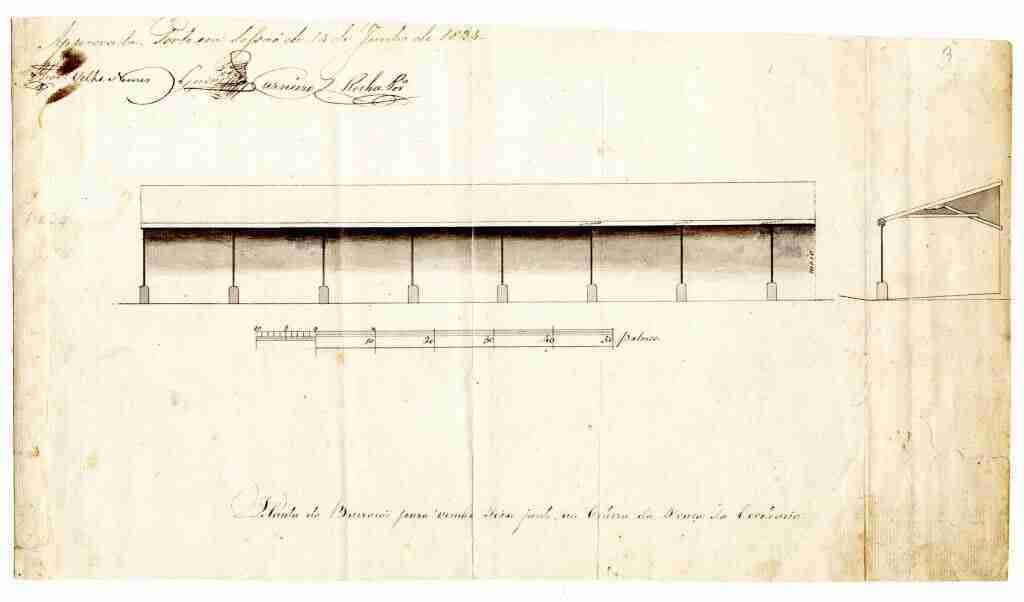
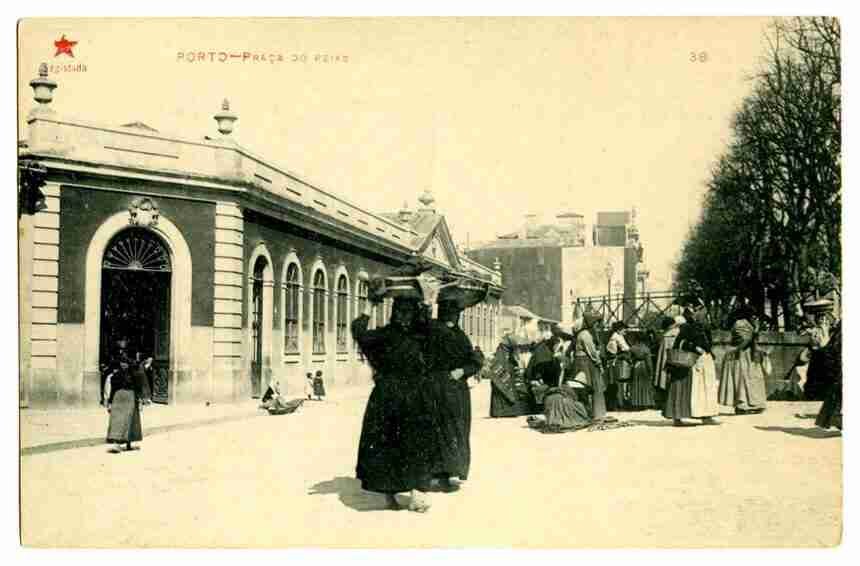

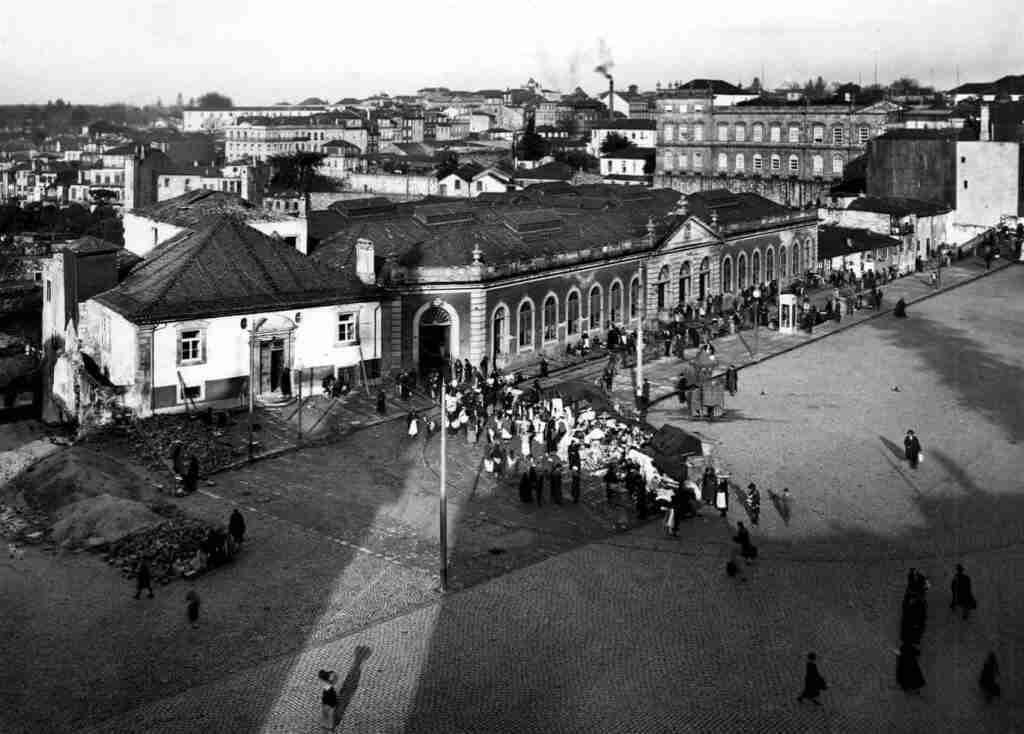

Mercado de Santa Teresa (ou Feira do Pão)
?-1909
Praça Guilherme Gomes Fernandes
The Mercado da Santa Teresa was located in the current Praça Guilherme Gomes Fernandes and was known by most as the Feira do Pão (Bread Fair). In fact, the actual square adopted the name of Praça do Pão (Bread Square). There is no accurate date for the beginning of this market, however, records already make reference in the early 19th century.
The picturesque wooden stalls occupied all of the square’s center and created a hustle and bustle all week long. The local bakers came here to sell their products, however, the bakers from Valongo and Avintes were undoubtedly the most prolific. Valongo, a land of great grain plantations and strong mills had for centuries been known as the land of bread. Thus, taking advantage of Porto’s need for quality bread, the Valongo’s bakers packed their donkeys with baskets of bread and rode to the city. Meanwhile, bakers from Avintes (in Vila Nova de Gaia), that at the time already produced the magnificent broa de Avintes, sailed through the river Douro in small valboeiro boats and disembarked in the “Escadas das Padeiras” or Baker’s Steps, at the Cais da Ribeira, unloading baskets of bread and broa to sell in the market (see below).
It is known that the bestsellers were regueifa (a typical long white bread, with a soft interior and delicious crust), the broa de Avintes (a farmhouse rye and corn bread), pão podre (a sweet bread), pão molete (which is said to have appeared during the French invasions, on the account of General Moulet), tosta azeda, pão coado, and several biscuits. Curiously, the famous Padaria Ribeiro was founded in 1878, at the time where the Praça de Santa Teresa held the Bread Fair.
The end of the Mercado de Santa Teresa was dictated in 26 of May of 1909 when the bakers were transferred to the Mercado do Anjo.




Mercado do Anjo
1839-1952
Campo do Olival
The Mercado do Anjo appeared due to the will of the City Hall in concentrating the several fairs that were spread throughout the city center into one spot, in order to facilitate monitoring and ensuring the cleanliness of the city’s spaces.
A plot of land was chosen next to the Torre dos Clérigos and the Porta do Olival. The project deemed a triangular market, with an entrance in each vertex. As was usual at the time, the market was walled in granite and surrounded by an elegant wrought iron fencing, and due to the fact that it was in a water-rich area, the market had several fountains, such as the Arca do Anjo. The interior of the market was made up of rows of iron and wood stalls covered in roof tile, and the rows were well spaced to allow the efficient flow of people and goods, and shaded by groves of leafy trees.
The City Hall soon wanted to ensure that the Mercado do Anjo was a safe, clean and pleasant place, which was no easy task, considering the hustle and bustle of buyers and sellers. In a notice made by the City Hall on the 28th of December of 1838, strict rules concerning the functioning of the market were enlisted, which stated:
“The [stalls] on the North side are for sale of salted, smoked or bagged pig meat; those of the South end are for fresh beef, veal, and lamb; those of the West are for all the edibles that, usually and by license, are sold in squares and public markets.”
The butcher’s activity was thus regulated, and of other foodstuffs excluding greens, but fresh fish was prohibited, due to the lack of adequate conditions it would have to be sold in the Mercado do Peixe:
“ (…) in this square you will not sell fresh fish, or salted, except cod; everything else, such as beef innards, will be sold in the stall next to the Casa dos Expostos, in Cordaria.”
As for vegetables, fruits and animals, it was stated:
“ (…) in the center of the square will be sold vegetables, legumes, fruits, birds and other kinds, but separate enough amongst each other in order to not cause the ruckus that always comes from having many buyers in one place.”
The notice also included the prohibition of having cattle and animals roaming free, the occupation of roofs or the dumping of trash in the fountains and tanks. The market would also have to close when the bells sounded for six o’clock, only staying open for sellers that had to stock their stalls during the night.
This market’s long life also meant that the introdution of betterments and infrastructural and landscape alterations would have to happen now and then, having the market been stuck by progress, such as gas lighting. It was also intervened by the architect Marques da Silva in 1905.
The inauguration of the Mercado do Bolhão exerted a lot of pressure to Mercado do Anjo, which lost in popularity and investment, and eventually reached a complete degradation that dictated the market’s end. The Mercado do Anjo was demolished in 1952, on its 110th anniversary.
After that, the market’s location turned into a parking lot, and afterwards into a shopping mall, only to fall into decadence for several years. More recently, a complete rehabilitation was undertaken, and the space now hold a commercial and restaurant gallery, with a gardened roof.
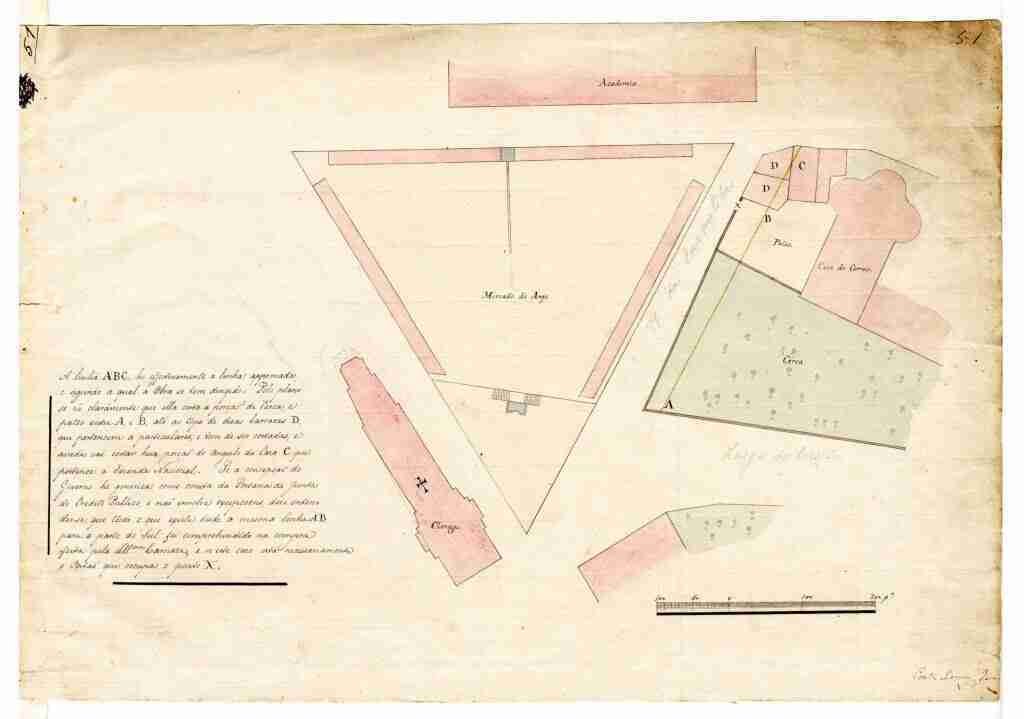
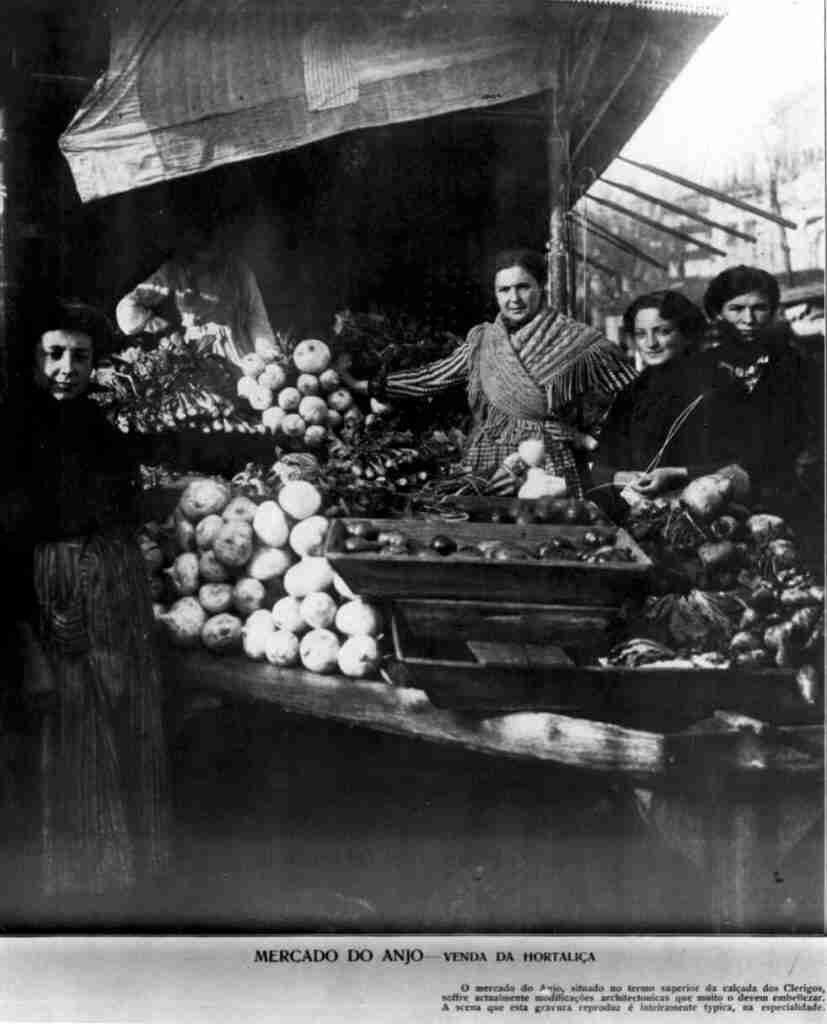
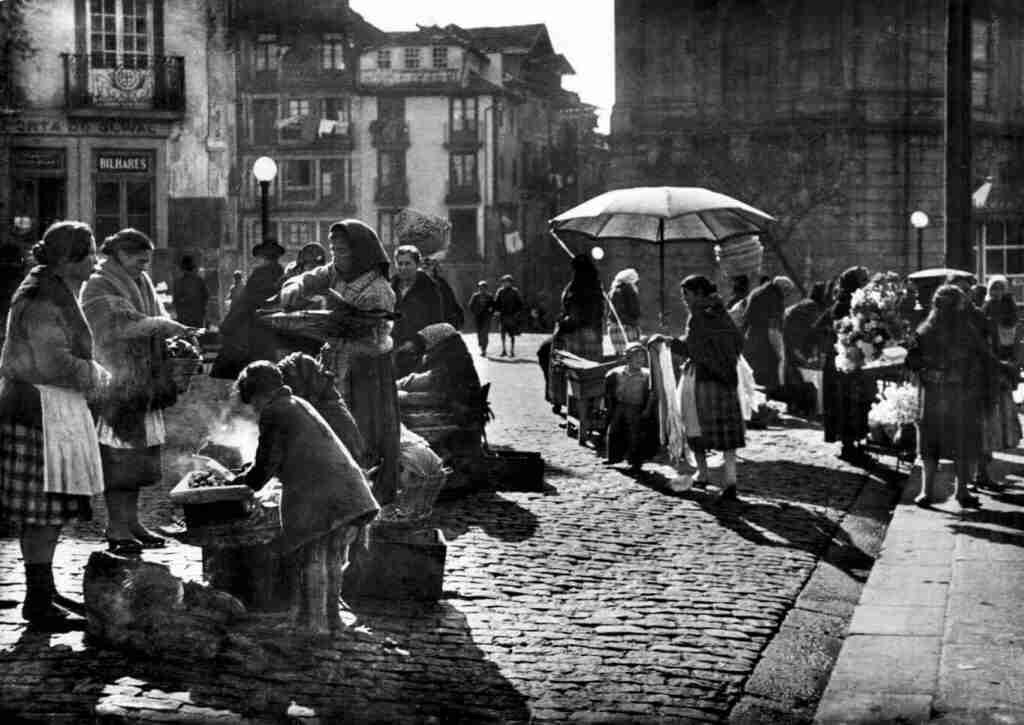
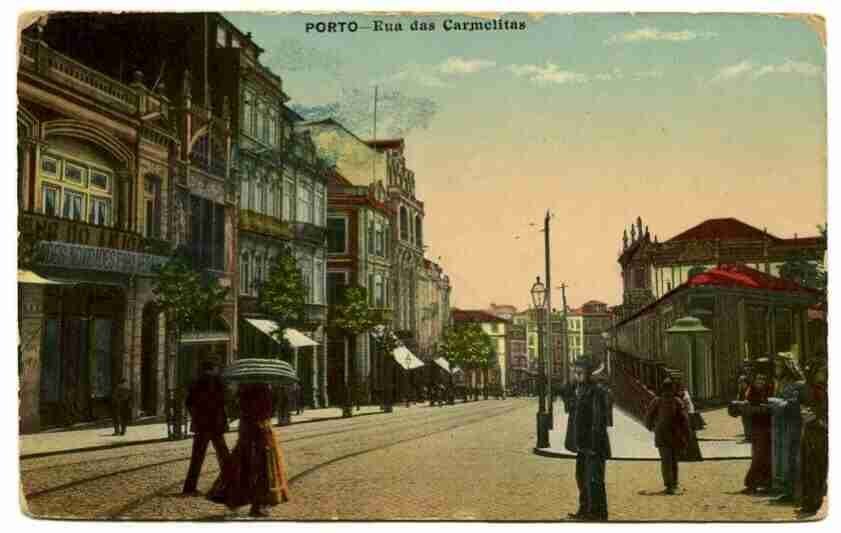


Mercado de Ferreira Borges
1888-1900 ; 1939-1978
Rua da Bolsa
The City Hall’s long-lived longing to substitute the precarious Mercado da Ribeira led to the projection of Mercado Ferreira Borges by the architect João Carlos Machado, and the construction began in 1885, coming to an end in 1888. The magnificent iron structure was made by the Companhia Aliança (Fundição de Massarelos). The market honours the name of the notorious Portuense politician, economist, and jurist José Ferreira Borges.
At the time, the sellers were very reliant in leaving the Mercado da Ribeira, thus, there was a weak adhesion to the new space. Only 22 years later, the Mercado Ferreira Borges had lost its utility as a market, and there were proposals for converting the space into a museum, such as a Colonial Museum, an Industrial Museum, a Municipal Museum or even a winter garden. However, no consensus was achieved, and thus the space was used by several different structures and for different purposes, such as an armory or a poor house. The classical beauty of this magnificent iron building stopped it from being demolished, as was considered in several occasions. Meanwhile, between 1939 and 1978 Porto’s wholesale fruit market was established in the building. The degradation of the market’s infrastructures dictated its abandonment in the late 70s, and it remained in a decadent state until its complete rehabilitation in 1983, by the same company who built it. After the rehabilitation, the space was dedicated to occasional cultural exhibitions, but without a definitive destiny.
he Mercado Ferreira Borges ended up gaining a new use when the building was given concession to Hard Club, in 2008. The construction work focused on adapting the space in a way that was completely reversible, by inserting two large black concrete structures that do not interfere with the fundamental features of the building. The old market is now a space for cultural events, concert hall, nightlife club, and also a bar and restaurant.
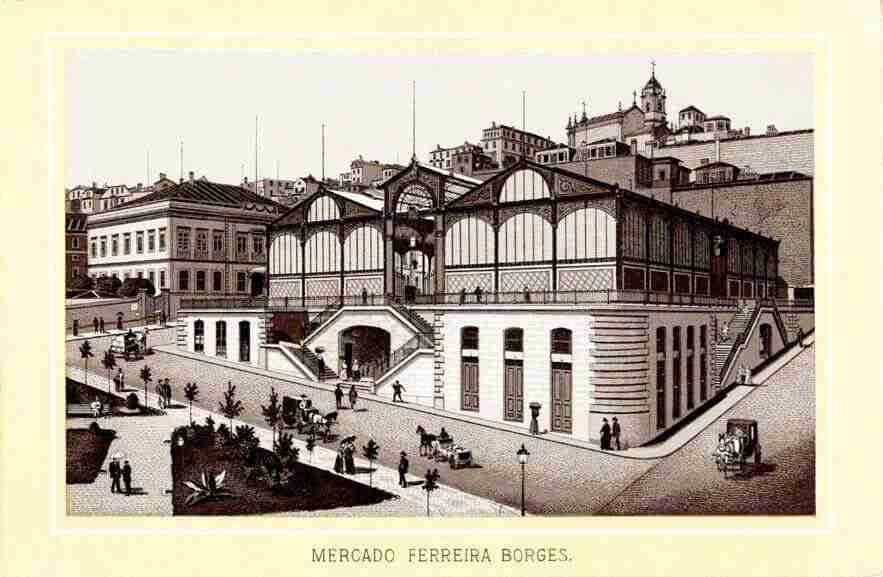



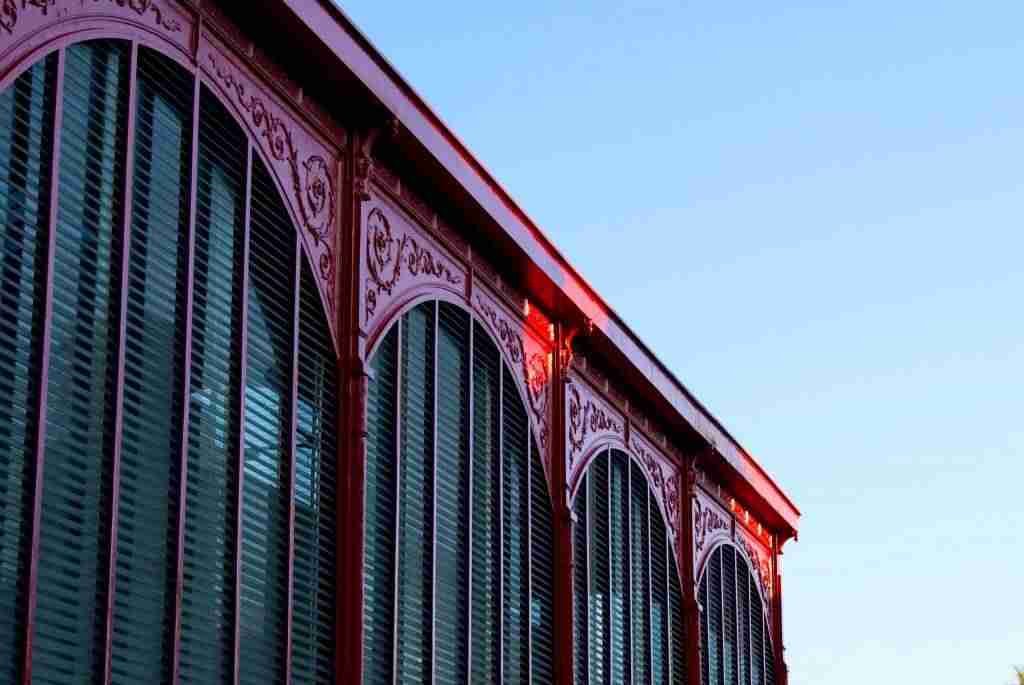
Mercado de Peixe do Cais dos Guindais
1849-1950
Cais dos Guindais
This market came to be in an odd manner. When the king Charles Albert of Sardinia died in his exile Porto, an alderman of the city responsible for the king’s funerary embarking requested the Alfândega do Porto (Porto’s customs) the temporary dislocation of the Mercado da Ribeira’s fish market to the Cais do Guindais (Guindais wharf). The change soon transitioned from temporary to permanent, which caused quite a hassle between the Alfândega and the City Hall, as the market conflicted with the wine’s debarkation. Meanwhile, and after solicitation, the queen D. Maria II authorizes the official establishment of the market by decree in 1851, valid until the location is needed for more pressing issues.
The market continued its activity until it was terminated by the City Hall in 1950, to perform urban interventions in the area.
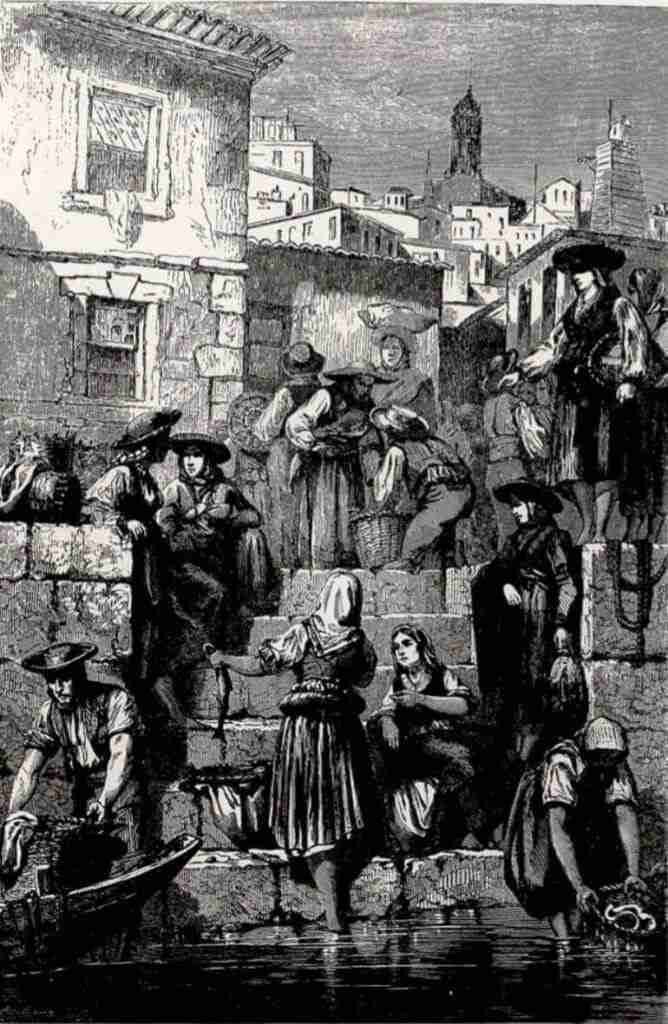
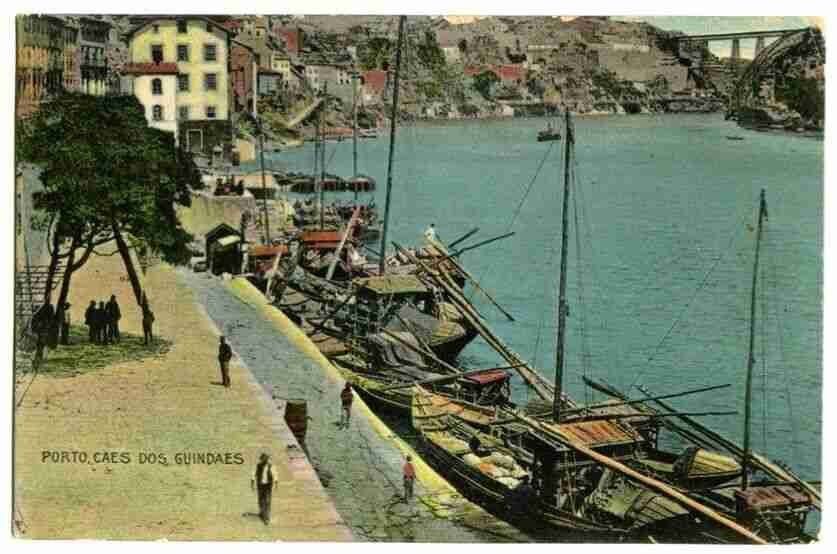
Mercado da Ribeira
???-
Cais da Ribeira
The Ribeira wharf had been for centuries one of the main locations for the disembarking of the groceries that supplied the city of Porto. It was here arrived that supplies such as salted cod and fresh fish, wine, vegetables and fruits, sugar, rice and spices, and all that which came from out of the city, to then be loaded and carried to its destination by ox carts. Naturally, this thriving port made the Ribeira wharf the ideal spot to form a street market, as it was also supported by several groceries. The origins of this market are not known, but the arrival of merchandise to the wharf always made an impulse towards commerce. The market did not have a building or a definitive location, but more makeshift stalls that were changed occasionally. The market changed, as expected, with the times. The Mercado da Ribeira still exists today, although in a very different version, dedicated to selling arts and crafts and pastry, and thus, not truly qualifying as the food market it once was.


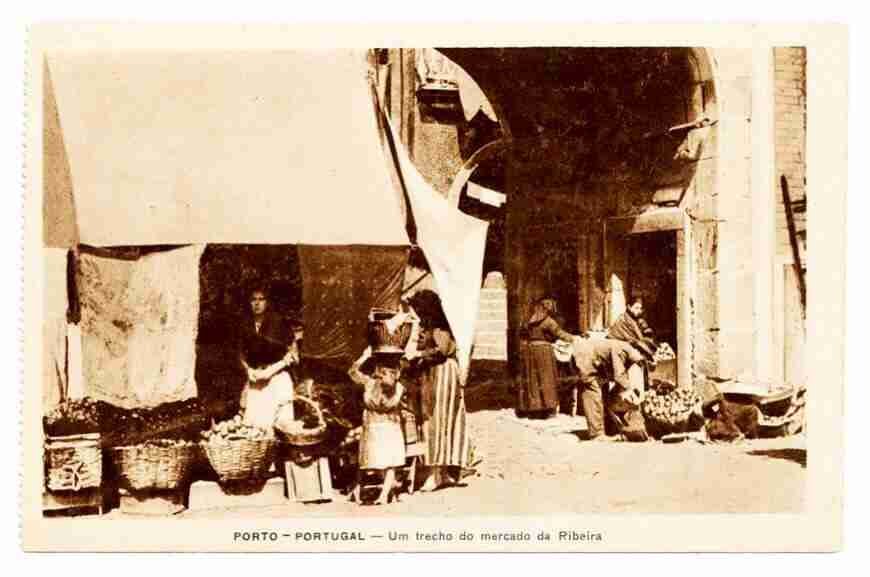
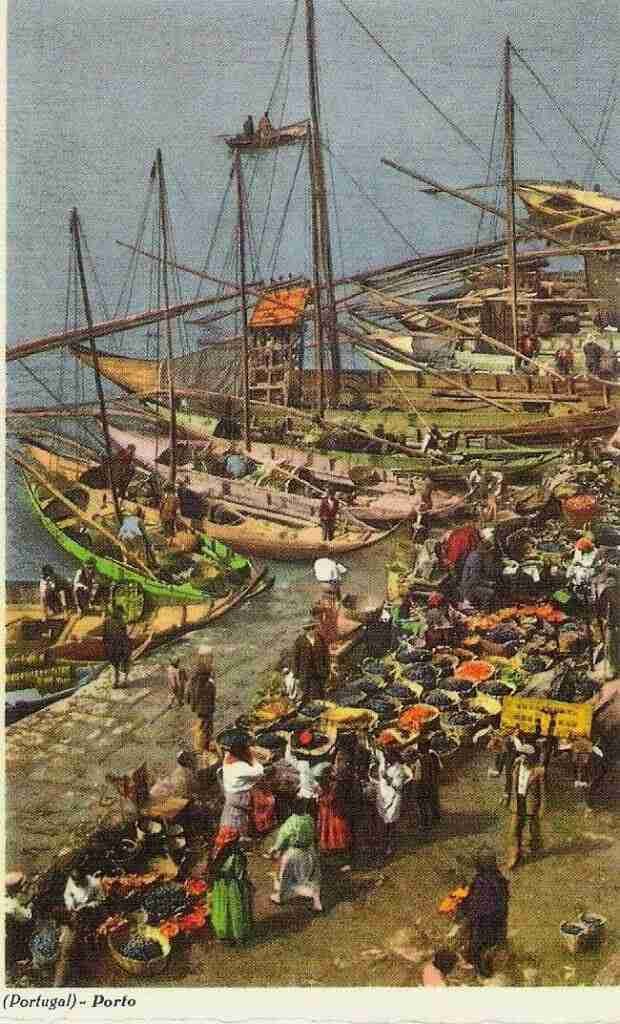
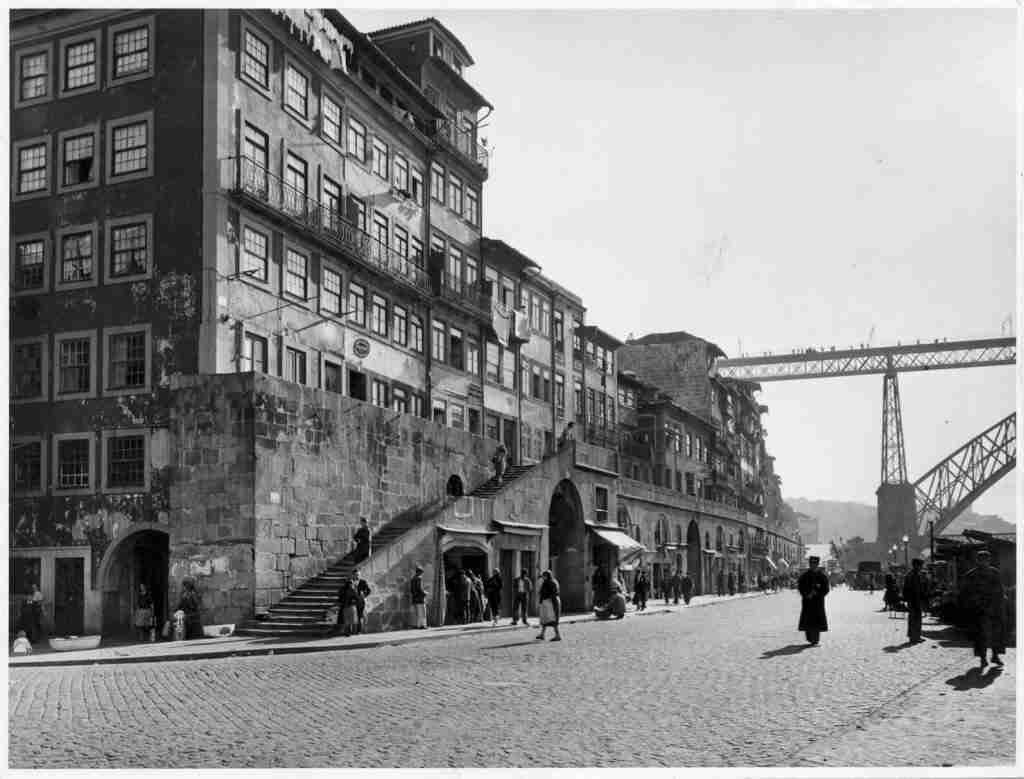
Mercado da Rua Escura
???-
Rua Escura e Rua de S. Sebastião
The Rua Escura street market was an old market that sided the Sé of Porto, stretching from the Rua Escura to the Rua de S. Sebastião. It is now named Mercado de S. Sebastião, but it differs, amongst other reasons, from the former market due to its permanent location, for it was then a street market, where temporary stalls were made and changed from time to time. The current building was built in the 1990s, but is in need of urgent repairs, for it lacks utility and conditions for the few sellers that still prevail.
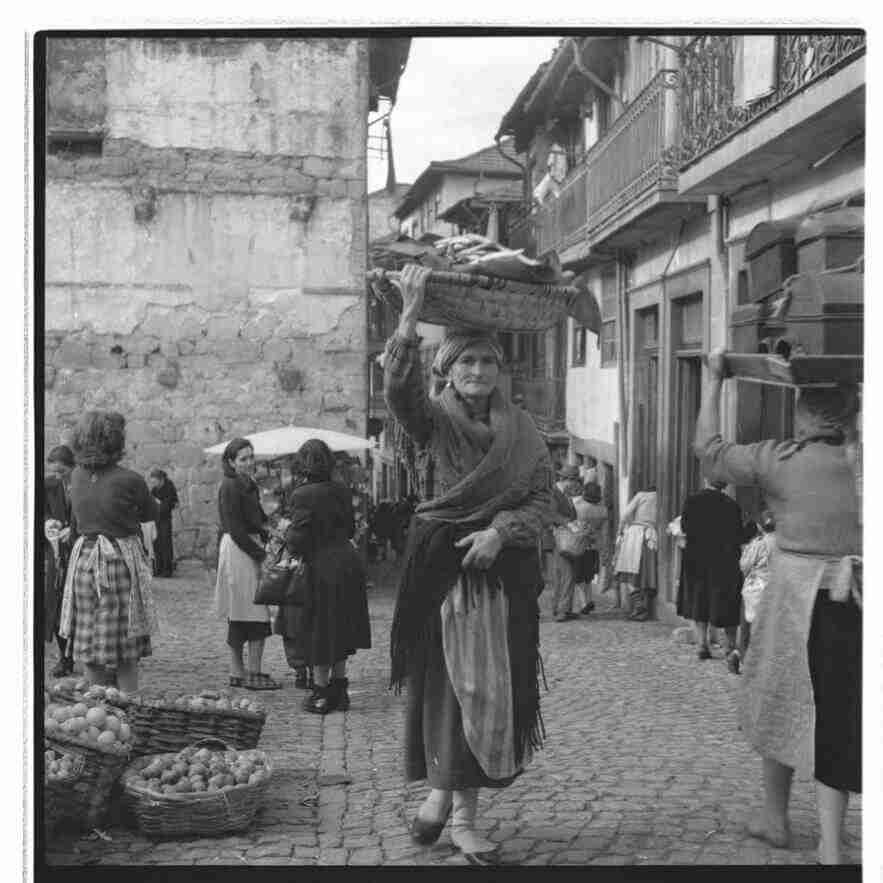
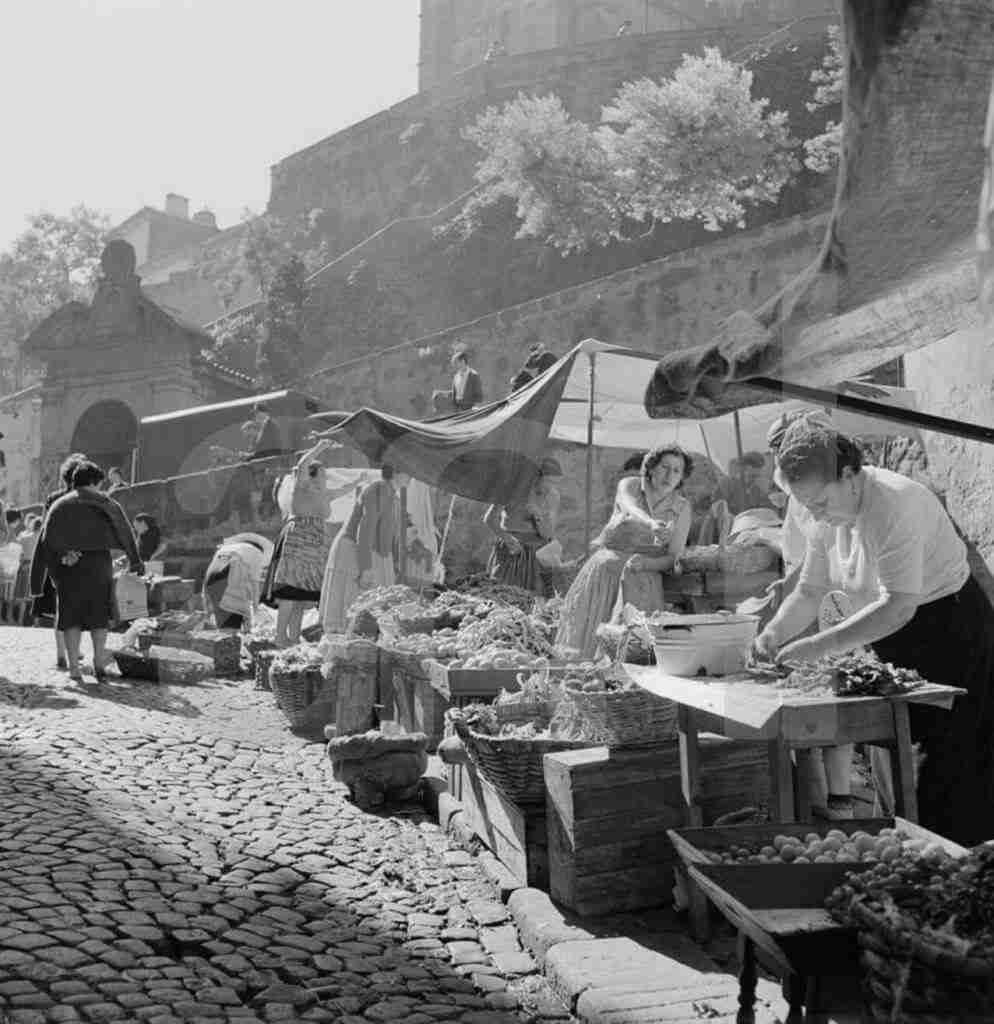

REFERENCES: - Jornal de Notícias 10/06/2007 - Marabo 2012 - Hard Club - Cadernos da Libânia - Jornal de Notícias 02/08/2008 - Blog José Manuel Cunha - Porto de Agostinho Rebelo da Costa aos Nossos Dias

